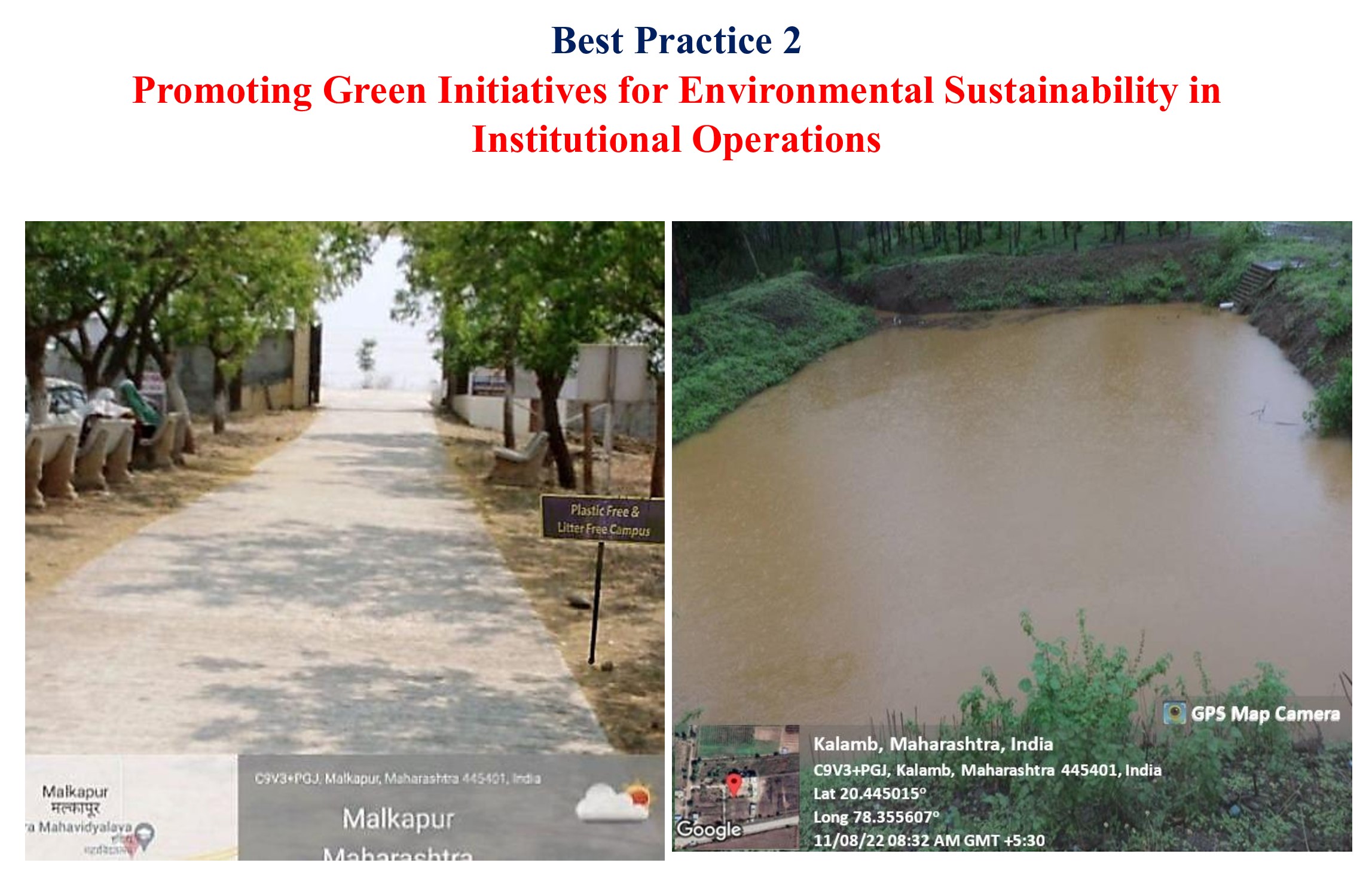| # | Year | Title | Author Name | |
|---|---|---|---|---|
| 1 . | 2022-2023 | DOCUMENTS FOR BEST PRACTICE II | Pavan Bhau Mandavkar |
इंदिरा महाविद्यालय, कळंब.
Indira Mahavidyalaya, Kalamb
(Permanently Affiliated to Sant Gadge Baba Amravati University, Amravati, Maharashtra)
Recognized by UGC - under 2 (f) (13 Nov.1995) and under 12 (B) (31 May 2002)
NAAC Accredited with A Grade (CGPA 3.09) in IIIrd Cycle
Indira Mahavidyalaya,MH SH 236, Kalamb-Ralegaon Road, Near Shri Saraswati Temple, Kalamb, Dist. Yavatmal, Maharashtra 445401. Office : 07201-299147 imvkalamb@yahoo.co.in
(Sub Menu)

Promoting
Green Initiatives for Environmental Sustainability in Institutional Operations
Objectives
The
objective of the institution is to
create an environmentally responsible campus, reduce our ecological footprint,
and instil a sense of environmental consciousness in our students. This
practice aims to protect natural resources, mitigate climate change effects,
and serve as a model for sustainable practices in situated community. By
integrating environmental principles into daily operations, the institution endeavours to foster a
community that values and actively participates in sustainability.
The
Context
Institution
was facing environmental challenges such
as water scarcity, plastic pollution, and greenhouse gas emissions.
Additionally, the surrounding soil is
hard, less fertile, and infested with termites, threatening young plants. However, Environment consciousness is the motto of
the college. An emblem for plastic ban, and efforts to cut greenhouse gas
emissions and reduces fossil fuel dependency is the mission of college.
Chemical waste pits have also been established for safe hazardous waste
disposal, reducing environmental risks.
The
Practice
The
Institution has adopted a range of sustainable practices.
Maintaining Perennial Plant Cover
The
natural blocks and the steps constructed on the slope of the hill arrest
the speed of water flow at the college. The check dam not only prevents soil
erosion but also stores water for plants and different purposes.
Tree plantation is become the major concern of the college to
maintain the pristine purity and beauty of the college.
Rain Water Harvesting
The buildings are
assembled with pipe-lines. With help of these pipelines, rain water is channeled to the water
reservoir with proper sloping. It increases the water
level of underground wells. This has helped a lot to
raise water level and irrigation the soil.
Water Conservation
The
College has installed water efficient fixtures
to minimize water wastage.
Energy Conservation
The room structure has wide windows so that the
natural light allows entering in the class room. LED lights have been installed in places where energy
consumption is high. Master
switches have been installed in all
the classrooms and floors and they
are labeled so that, only those required can be switched
on.
Energy audit and Green Audit are
regularly done from external auditing agency, which gives idea about
quantifying current environmental scenario of Institute. The campus also hosts a diverse array of flora and fauna, serving as an educational hub for environmental awareness. Environmental Day, Geography Day, Earth Day, foster environmental
awareness and promote community engagement.
Ban on single-use plastics addresses the major
source of plastic waste, contributing to a culture of sustainability within the
campus and beyond.
Evidence
of Success
The Institution has been
awarded with two prestigious awards for the Best Green Campus, and an appreciation
letter validating our green
initiatives.
Success is evident through various measures: Water harvesting has greatly
reduced dependency on external water sources, evidenced by increased well water
levels. The soothing environment reduces
water runoff. Efforts to reduce greenhouse gas emissions have lowered the
college's carbon footprint. Chemical
waste pits have ensured the
responsible disposal of hazardous
materials. The reduction in single-use plastic has raised awareness among
students.
Problems Encountered and Resource
Required
The
Institution faces few challenges, including initial setup costs for sustainable
infrastructure and ongoing maintenance needs. There is less awareness and
understanding of nearby tribal community about environmental issues.

